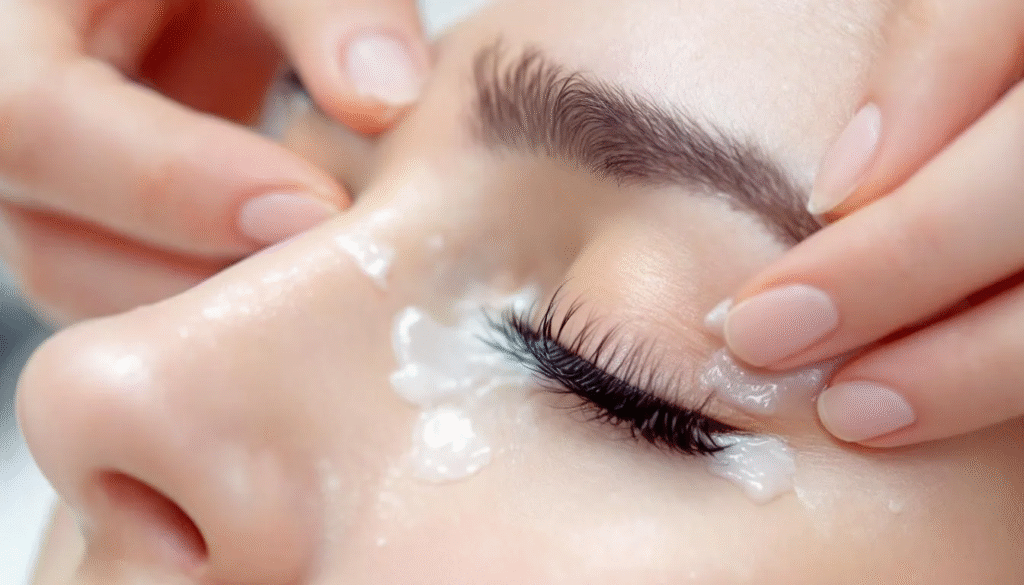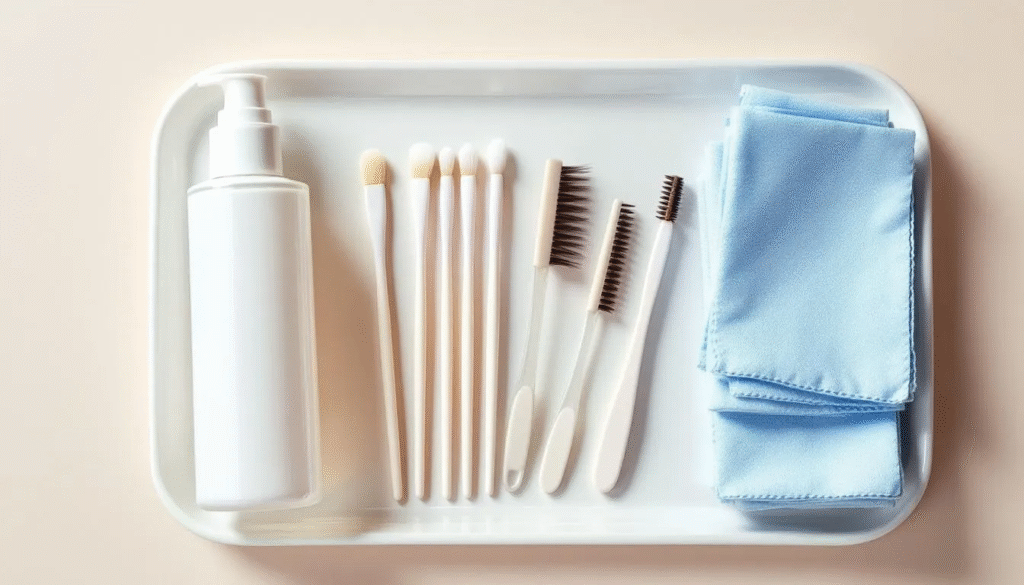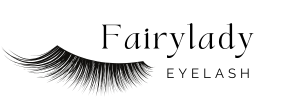Your beautiful new lash extensions represent a significant investment in your appearance and confidence. Whether you’ve spent $80 or $300 on professional eyelash extensions, proper eyelash extension aftercare can make the difference between extensions lasting just 2-3 weeks versus a full 4-6 weeks. This comprehensive guide will walk you through every aspect of caring for your lash extensions, from the critical first 24 hours through long-term maintenance strategies that protect both your investment and your natural lashes.
Understanding how to properly maintain your extensions isn’t just about aesthetics—it’s about protecting your eye health, preserving your natural lash strength, and ensuring you get maximum value from every lash extension appointment. With the right aftercare routine, you’ll maintain fuller, more beautiful lashes while extending the time between costly touch-up appointments.
Why Proper Eyelash Extension Aftercare Matters
Proper aftercare extends lash extension lifespan from 2-3 weeks to 4-6 weeks, essentially doubling the value of your investment. When you protect your $150-300 investment in professional lash extensions through consistent aftercare, you’re not only saving money but also maintaining the stunning look that drew you to extensions in the first place.
Beyond financial benefits, proper extension aftercare prevents damage to your natural lashes and maintains optimal eye health. Your natural lashes serve as the foundation for extensions, and poor aftercare can lead to premature shedding, breakage, or even infection around the lash line. Quality aftercare ensures extensions maintain their shape, curl, and fullness between appointments, giving you consistent, camera-ready lashes every day.

The science behind lash extension aftercare centers on the adhesive bond. Professional lash adhesives contain cyanoacrylate compounds that require specific conditions to cure properly and maintain their strength. This adhesive creates a molecular bond between your natural lash and the extension, but this bond remains vulnerable to certain substances and environmental factors. Understanding this relationship is crucial for maintaining extensions that look salon-fresh throughout their entire lifespan.
When aftercare protocols are followed correctly, the adhesive bond remains intact, extensions maintain their proper positioning, and your natural lashes stay healthy underneath. Poor aftercare, however, can lead to premature lash loss, poor retention, and potential damage to your natural lashes that may take months to recover.
The Critical First 24-48 Hours
The first 24-48 hours after your lash extension appointment are absolutely critical for long-term success. During this period, you must keep lashes completely dry for the first 24 hours after application. This means no water contact whatsoever—no face washing, no accidental splashing, and definitely no intentional wetting of the eye area.
The curing process of lash extension adhesive is a chemical reaction that requires time to reach full strength. When the adhesive is initially applied, it begins polymerization—a process where individual molecules link together to form strong, flexible chains. Interrupting this process with water or moisture can prevent proper curing, resulting in weak bonds that fail prematurely and lead to poor retention.
Avoid steam rooms, saunas, hot yoga, and steamy showers during this critical period. High humidity environments above 70% can interfere with proper adhesive curing just as much as direct water contact. The moisture in the air can cause the adhesive to cure too quickly on the surface while remaining soft underneath, creating a weak bond that won’t last.
Skip swimming pools, hot tubs, and beach activities for the full 48 hours following your appointment. Chlorinated water is particularly damaging to fresh adhesive bonds, while salt water can cause immediate breakdown of the curing process. Even brief exposure during this window can compromise weeks of wear time.
Additional restrictions during the first 48 hours include avoiding crying, sweating from workouts, and any activity that creates excessive moisture around the eyes. While emotional tears are sometimes unavoidable, excessive crying during the curing period can significantly impact retention. Similarly, intense workouts that produce heavy sweating should be postponed until the adhesive has fully cured.
No makeup removal or face washing that could splash water on lashes should occur during this period. This means planning your lash appointment timing carefully—avoid scheduling extensions right before events where makeup will be necessary, or plan alternative cleansing methods that keep the eye area completely dry.
Daily Cleaning and Maintenance Routine
Once the initial curing period is complete, establishing a consistent daily cleaning routine becomes essential for maintaining both lash extensions and eye health. Clean lashes daily with oil free, extension-safe foaming cleanser specifically formulated for use with lash extensions. Generic cleansers may contain ingredients that break down the adhesive bond or irritate the delicate eye area.
Your daily routine should take approximately 2-3 minutes and become as automatic as brushing your teeth. Use a clean mascara wand or specialized lash brush to gently comb through extensions, working from the base to the tips to maintain proper curl and separation. This daily brushing prevents tangling and helps maintain the salon-fresh appearance of your extensions.
Remove makeup with oil free micellar water or gel-based makeup removers that won’t compromise the adhesive bond. Oil based products of any kind should be completely avoided, as they will gradually dissolve the adhesive and cause premature lash loss. When removing eye makeup, work carefully around the lash area and avoid any pulling or tugging motions.
After cleansing, pat dry with lint-free cloths or paper towels—never rub or pull at the extensions. Rubbing can cause mechanical damage to both the extensions and your natural lashes, while also disrupting the carefully maintained curl pattern created by your lash artist.

Proper Cleaning Technique
The specific technique for cleaning lash extensions is crucial for maintaining their longevity and your eye health. Apply extension-safe cleanser to closed eyes and gently massage the lash line for 10-15 seconds using your fingertips. Focus on the base of the lashes where makeup, oils, and debris tend to accumulate, but avoid excessive pressure that could disturb the adhesive bond.
Rinse with cool to lukewarm water, avoiding high water pressure that could force extensions out of position. Use a gentle stream of water and cup your hands to control the flow, ensuring the water moves downward rather than directly against the lash line. Hot water should be avoided as it can weaken the adhesive over time.
While the lashes are still damp, use a clean lash brush to gently brush lashes downward and outward to maintain their curl and prevent tangling. This is the optimal time for brushing, as the extensions are slightly more pliable when damp and easier to position correctly.
Allow lashes to air dry completely before applying any products or makeup. Forced drying with blow dryers or fans can disrupt the natural curl pattern and potentially damage the extensions. The air drying process typically takes 10-15 minutes and helps ensure extensions settle into their proper position.
What to Avoid to Protect Your Extensions
Understanding what products and behaviors to avoid is just as important as knowing proper aftercare techniques. Oil based products including coconut oil, cleansing oils, and oil based makeup removers are the primary enemies of lash extension adhesive. These products gradually dissolve the adhesive bond, causing extensions to fall off prematurely and requiring more frequent touch-ups.
Waterproof mascara and eyeliner require harsh removal methods that are incompatible with lash extension care. These products often require oil based makeup removers or vigorous rubbing to remove completely, both of which can damage extensions and natural lashes. If mascara is absolutely necessary for special occasions, use only extension-safe, water-based formulas and apply sparingly to the tips of extensions only.
Mechanical eyelash curlers should never be used on lash extensions, as they can crimp, break, or completely remove extensions from your natural lashes. The pressure and crimping action of traditional eyelash curlers can cause immediate and irreversible damage to extensions, potentially requiring professional removal and reapplication.
Avoid rubbing, pulling, or picking at lashes when tired, stressed, or simply out of habit. This unconscious behavior is one of the most common causes of premature lash loss and can also damage your natural lashes underneath. If you find yourself touching your lashes frequently, consider keeping your hands occupied with a stress ball or fidget toy.
Glycol-based products and alcohol-heavy toners near the eye area can gradually weaken adhesive bonds and cause irritation. Check ingredient lists on all skincare products that might come into contact with the eye area, and choose alcohol-free, oil free formulations whenever possible.
Sleeping and Lifestyle Protection Tips
Your sleeping position and bedroom environment play a significant role in extension longevity. Sleep on your back or side to prevent lashes from pressing against pillows, which can cause flattening, tangling, or premature shedding. Back sleeping is ideal for lash extension wearers, as it eliminates any contact between lashes and bedding.
Use silk or satin pillowcases to reduce friction and tangling when side sleeping is unavoidable. These smooth fabrics create less friction than cotton or other textured materials, allowing lashes to glide rather than catch and pull. The investment in quality bedding pays for itself through extended lash wear time.
Consider a contoured sleep mask designed specifically for lash extension wearers if you need complete darkness for sleep. Traditional sleep masks can crush or bend extensions, but specially designed masks have curved areas that accommodate lash length while blocking light effectively.
Avoid face-down sleeping positions that flatten or bend extensions against pillows or mattresses. This sleeping position is particularly damaging to longer extension styles and can cause permanent curl loss that can’t be corrected without professional adjustment.

Limit exposure to extreme heat sources like blow dryers, ovens, and grills, which can soften the adhesive and cause extensions to lose their curl. When using blow dryers, direct airflow away from the face or use a lower heat setting. Professional stylists recommend keeping heat tools at least 12 inches away from lash extensions.
When to Schedule Touch-Ups and Fills
Understanding when to schedule maintenance appointments is crucial for maintaining consistent lash fullness and appearance. Book fill appointments every 2-3 weeks to maintain approximately 70% lash fullness, which is the industry standard for optimal appearance. Waiting longer than 3 weeks often requires a full replacement rather than a simple fill, increasing both time and cost.
Schedule touch-ups when you notice 40-50% of extensions have shed, which typically occurs around the 2-week mark for most clients. This timing ensures you’re never caught with sparse-looking lashes and maintains the investment you’ve made in your appearance.
Plan appointments before special events or vacations to ensure your lashes look their absolute best when it matters most. Booking fills 1-2 days before important events gives you time to adjust to any new lashes and ensures optimal appearance for photos and special occasions.
Consider seasonal factors when scheduling appointments, as faster shedding occurs in summer due to increased heat exposure, swimming, and higher humidity levels. You may need more frequent fills during the summer months, while winter often allows for slightly longer intervals between appointments.
Keep a lash diary or use your phone’s calendar to track your natural lash cycle and extension wear patterns. This personal data helps you optimize your appointment schedule and budget for lash maintenance throughout the year.
Troubleshooting Common Aftercare Issues
Even with perfect aftercare intentions, situations arise that require quick thinking and proper responses. If lashes accidentally get wet during the first 24 hours, immediately pat them dry with a clean, lint-free cloth and avoid touching them for the remainder of the curing period. While this isn’t ideal, gentle drying and subsequent careful handling can minimize damage to the adhesive bond.
Managing lash extensions during illness or medication changes requires special attention, as both can affect natural lash growth cycles and oil production around the eyes. Increased tear production during illness can stress the adhesive bond, while certain medications may accelerate natural lash shedding. Gentle, consistent cleaning becomes even more important during these periods.
If extensions feel uncomfortable or irritating, resist the urge to rub or pull at them. Instead, use a clean lash brush to gently separate any tangled lashes and ensure they’re lying in their proper direction. Persistent discomfort should prompt immediate consultation with your lash technician, as it may indicate an allergic reaction or application issue.
Excessive tearing from allergies or emotions requires immediate but gentle attention. Blot tears carefully with a clean tissue, avoiding any wiping or rubbing motions. Follow up with gentle cleaning using your regular extension-safe cleanser to remove any salt residue that could irritate the eye area or affect the adhesive.
Swimming and Water Activities
Once the initial 48-hour period has passed, swimming and water activities require special precautions to protect your investment. Wait at least 48 hours before swimming in chlorinated pools, as chlorine can be particularly harsh on lash extension adhesive even after full curing. When you do swim, limit underwater time and avoid opening your eyes underwater.
Rinse lashes immediately after ocean swimming to remove salt, which can crystallize and create abrasive conditions around the lash line. Use fresh water to thoroughly flush the eye area, then follow with your regular cleaning routine once you’re completely out of the water.
Avoid underwater activities that create strong water pressure against lashes, such as diving or vigorous swimming strokes that cause face-first water impact. Water pressure can force extensions out of position or break adhesive bonds even when fully cured.
Clean lashes thoroughly after any water exposure to prevent buildup of chlorine, salt, or other chemicals that could cause long-term damage. Use your regular extension-safe cleanser and follow your normal aftercare routine, paying extra attention to complete rinsing and proper drying.
Essential Aftercare Products and Tools
Investing in the right aftercare products is essential for maximizing your lash extension investment. Oil-free foaming lash cleansers specifically formulated for extensions should be your primary cleaning tool. Look for pH-balanced formulas that match natural tear composition and avoid harsh sulfates or alcohol-based ingredients.
Clean mascara wands or specialized lash brushes for daily grooming are indispensable tools for maintaining extension appearance. Disposable mascara wands offer the highest hygiene standards, while high-quality lash brushes can be cleaned and reused with proper maintenance. Replace brushes regularly to prevent bacteria buildup.
Lint-free microfiber cloths for gentle drying protect extensions from snags and pulls that can occur with regular towels. These specialized cloths are also excellent for removing makeup around the eye area without risk of catching on extensions.
Extension-safe makeup products, including oil-free concealers and eyeshadows, allow you to maintain your makeup routine without compromising lash longevity. Water-based formulas are generally safer than oil-based or cream products that might migrate to the lash line.

For special occasions, lash-friendly mascara can be applied sparingly to extension tips only. Choose water-based, easily removable formulas and never apply mascara to the base of extensions, where it could interfere with the adhesive bond. Remove mascara immediately after events using gentle, oil-free methods.
Professional lash sealants or protective coatings can extend wear time when used correctly and sparingly. These products create an additional barrier against environmental damage, but should only be used as directed by your lash technician to avoid product buildup.
Maintaining Natural Lash Health Long-Term
Taking breaks between extension sets every 6-8 weeks allows your natural lashes to recover and regenerate fully. This rest period is crucial for maintaining the health and strength of your natural lash foundation, which supports future extension applications.
During break periods, use lash growth serums containing peptides or biotin to strengthen natural lashes and promote healthy growth. These serums can improve the thickness and length of your natural lashes, providing better support for future extensions and improving overall lash health.
Maintain a healthy diet rich in biotin, vitamins A, C, and E, and omega-3 fatty acids to support strong lash growth from within. Proper nutrition provides the building blocks for healthy hair growth, including eyelashes, and can improve both natural lash quality and extension retention.
Address any underlying health issues that cause excessive lash shedding, such as thyroid disorders, hormonal imbalances, or autoimmune conditions. These medical issues can significantly impact lash growth cycles and extension retention, making professional medical consultation important for optimal results.
Work exclusively with experienced lash technicians who prioritize natural lash health over dramatic looks that might compromise your natural lashes. A skilled technician will assess your natural lash strength and recommend appropriate extension weights and lengths that enhance your beauty without causing damage.
Regular professional assessments of your natural lash health help identify potential issues before they become serious problems. Your lash artist should examine your natural lashes during each appointment and adjust extension choices based on your natural lash condition.
Monitor your natural lashes for signs of damage such as thinning, brittle texture, or unusual shedding patterns. Early intervention can prevent long-term damage and ensure you can continue enjoying lash extensions for years to come.
Understanding the natural lash growth cycle helps set realistic expectations for extension wear and replacement timing. Natural lashes have a growth phase lasting 30-45 days, followed by a resting phase and eventual shedding. Extension longevity is ultimately limited by this natural cycle, regardless of perfect aftercare.
Professional consultation becomes essential when you notice persistent irritation, allergic reactions, or significant changes in your natural lash health. Your lash technician can identify whether issues stem from aftercare problems, product sensitivities, or underlying health conditions requiring medical attention.
Following this comprehensive eyelash extension aftercare guide will help you maximize your investment while maintaining healthy, beautiful lashes. Remember that consistent daily care, proper product selection, and regular professional maintenance are the keys to long-lasting, stunning lash extensions that enhance your natural beauty safely and effectively.
